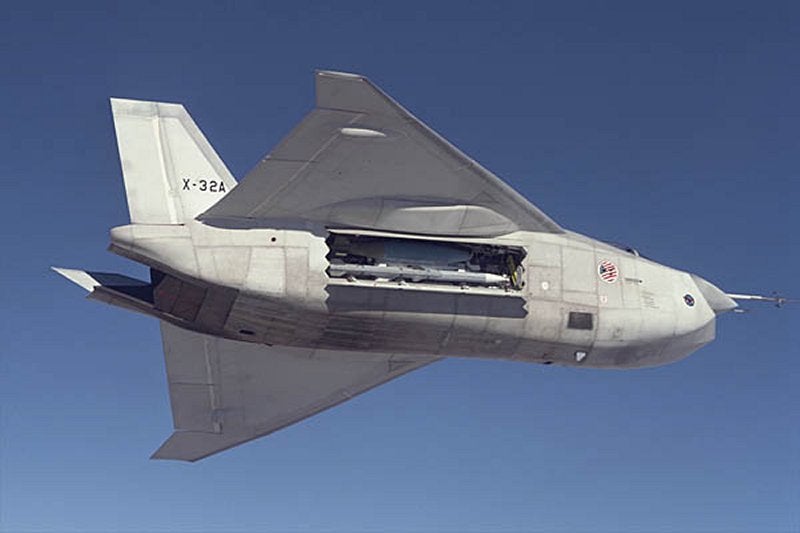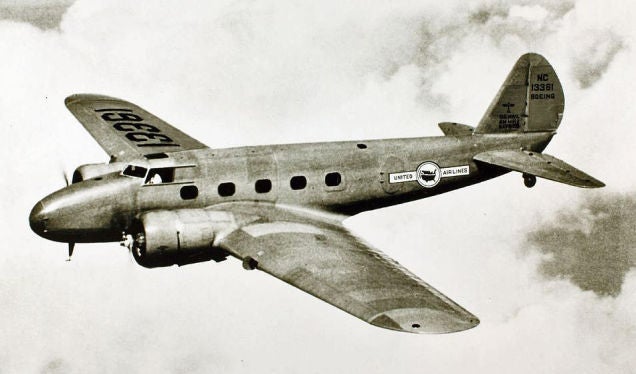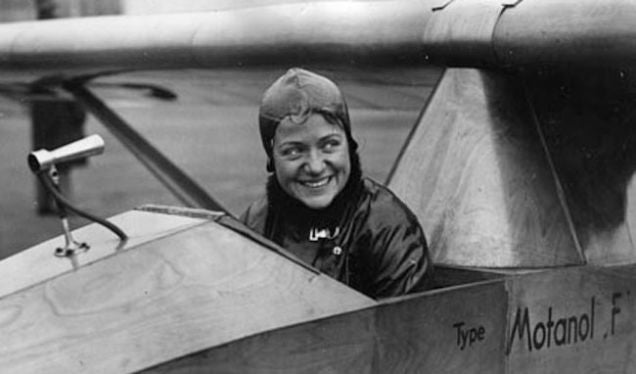 "ttyymmnn" (ttyymmnn)
"ttyymmnn" (ttyymmnn)
03/30/2018 at 12:35 • Filed to: wingspan, planelopnik history, Planelopnik
 14
14
 8
8
 "ttyymmnn" (ttyymmnn)
"ttyymmnn" (ttyymmnn)
03/30/2018 at 12:35 • Filed to: wingspan, planelopnik history, Planelopnik |  14 14
|  8 8 |
!!! UNKNOWN CONTENT TYPE !!!
Welcome to
This Date in Aviation History
, getting of you caught up on milestones, important historical events and people in aviation from March 28 through March 30.
!!! UNKNOWN CONTENT TYPE !!!

(US Air Force)
March 29, 2001 – The first flight of the X-32B Joint Strike Fighter. In 1960, both the US Air Force and US Navy were looking to develop a new large tactical fighter/bomber and, in an effort to dave money, Defense Secretary Robert McNamara dictated that the two services to work together to find one aircraft that could serve both branches. The result of that directive was the Tactical Fighter Experimental (TFX) program that led to the development of the !!!error: Indecipherable SUB-paragraph formatting!!! . But it soon became clear that the two services had very different missions in mind for the aircraft, and the Navy eventually dropped out of the program to develop the !!!error: Indecipherable SUB-paragraph formatting!!! instead. The moral of that story is that, no matter how hard you try, it is extraordinarily difficult to make a single aircraft that can fulfill such different and specific roles. But that didn’t stop the US Department of Defense (DoD) from trying the same thing again, but this time, with a fighter for all three fixed-wing services (the last to do that successfully was the !!!error: Indecipherable SUB-paragraph formatting!!! ).
 !!!CAPTION ERROR: MAY BE MULTI-LINE OR CONTAIN LINK!!!
!!!CAPTION ERROR: MAY BE MULTI-LINE OR CONTAIN LINK!!!
Through the merger of various ongoing aircraft procurement programs, the !!!error: Indecipherable SUB-paragraph formatting!!! (JSF) program was launched in 1993 to develop a single basic airframe that could fulfill the strike, fighter, and ground attack roles, be capable of short takeoff and vertical landing (STOVL), and employ stealth technology. Boeing and Lockheed Martin were chosen to build prototypes, which became the X-32 and X-35 respectively. Though both aircraft shared the same mission parameters, the two companies tried to solve the design challenges in very different ways, and they were only permitted to use the money provided by the DOD. Boeing’s goal was to create three different versions of the same fighter with as many common parts as possible, so where Lockheed Martin designed a complex, shaft-driven fan for the STOVL variant of the X-35, Boeing opted for using vectored thrust coming from an engine placed well forward in the fuselage. This engine placement is what gave the X-32 its bulky appearance, as well as its pronounced chin intake. But this large intake, with the engine almost directly behind it, had the negative impact of exposing the turbine blades to radar detection, a problem that Boeing had plans to mitigate but were never fully developed. Boeing also chose a single piece, carbon fiber composite delta wing that was capable of holding 20,000 pounds of fuel.
 !!!CAPTION ERROR: MAY BE MULTI-LINE OR CONTAIN LINK!!!
!!!CAPTION ERROR: MAY BE MULTI-LINE OR CONTAIN LINK!!!
However, 8 months into the construction of the prototype, the Navy changed their requirements, and Boeing was forced to redesign the tail of the aircraft. Since there was no time to work those changes into the prototypes before testing began, Boeing was forced to use two different configurations to prove their technology. The X-32A was the conventional takeoff aircraft for the Air Force and Navy (CTOL), while the X-32B was the STOVL demonstrator for the Marine Corps. The first flight of the X-32A took place on September 18, 2000, followed six months later by the X-32B. The X-32B was powered by a !!!error: Indecipherable SUB-paragraph formatting!!! afterburning turbofan which gave the fighter a top speed Mach 1.6 in level flight. To transition to vertical landing, a butterfly valve redirected the jet output to vectoring nozzles, and attitude was controlled by ducted nozzles on the wingtips, with others fore and aft on the fuselage. This configuration meant that the X-32B was powered by a direct lift engine, similar to the !!!error: Indecipherable SUB-paragraph formatting!!! . While this arrangement was significantly less complex than the system derived by Lockheed Martin, it had the drawback of being less powerful, and not capable of carrying the same loads. In fact, Boeing had to remove panels to reduce weight for the STOVL test flights.
After the flyoff competition, the X-35 was chosen over the X-32 on October 26, 2001, and that aircraft went on to become the
!!!error: Indecipherable SUB-paragraph formatting!!!
, an aircraft that has seen significant problems and cost overruns in its development. We will never know if the Boeing aircraft would have been any easier or cheaper to develop. Though Boeing lost the billions of dollars they stood to gain had they won the contract, the X-32 still provided invaluable research data and experience with advanced designs and materials. Both the X-32A and X-32B have been preserved, with the former awaiting restoration at the National Museum of the United States Air Force, and the latter on display at the Patuxent River Naval Air Museum.
!!! UNKNOWN CONTENT TYPE !!!
Short Takeoff
!!! UNKNOWN CONTENT TYPE !!!

(San Diego Air and Space Museum)
March 28, 1931 – United Air Lines is formed
by the combination of Boeing Air Transport (previously merged with Pratt & Whitney to create United Aircraft and Transport Corporation), National Air Transport, Varney Airlines and Pacific Air Transport. United began transcontinental flights in 1933 flying the
!!!error: Indecipherable SUB-paragraph formatting!!!
, the first all-metal jetliner. Today, United is one of the world’s largest airlines with approximately 83,000 employees, and the third largest when measured by scheduled passenger-miles flown and fleet size, and flies to 342 destinations in 60 countries. In 2010, United merged with Continental, and the company changed its name to United Continental Holdings to reflect the merger.
!!! UNKNOWN CONTENT TYPE !!!

(Japanese government)
March 28, 1931 – The first flight of the Mitsubishi 2MR,
a
!!!error: Indecipherable SUB-paragraph formatting!!!
wing reconnaissance monoplane designed for the Imperial Japanese Army and the first Japanese military aircraft to be both designed and built in Japan. All four prototypes took their maiden flight on the same date, and Mitsubishi eventually produced 230 aircraft. The 2MR8 saw service in Manchuria beginning in 1933, and were also used by the Chinese Air Force during the
!!!error: Indecipherable SUB-paragraph formatting!!!
.
!!! UNKNOWN CONTENT TYPE !!!
 !!!CAPTION ERROR: MAY BE MULTI-LINE OR CONTAIN LINK!!!
!!!CAPTION ERROR: MAY BE MULTI-LINE OR CONTAIN LINK!!!
March 29, 1960 – The first flight of the Tupolev Tu-124, a twin engine airliner developed from the !!!error: Indecipherable SUB-paragraph formatting!!! and designed to meet Aeroflot’s requirement for a new regional airliner to replace the !!!error: Indecipherable SUB-paragraph formatting!!! . The Tu-124 was powered by a pair of !!!error: Indecipherable SUB-paragraph formatting!!! turbofans mounted in the wing roots that were more efficient than the turbojets of the Tu-104, and it could carry up to 56 passengers at a cruising speed of 540 mph with a range of 1,3oo miles. The Tu-124 was introduced in 1962, and was exported to numerous !!!error: Indecipherable SUB-paragraph formatting!!! countries, as well as India and Iraq. A total of 164 were produced, and it was finally withdrawn from Russian military service in 1992.
!!! UNKNOWN CONTENT TYPE !!!

(Photo author unknown)
March 29, 1912 – The birth of Hanna Reitsch,
a German aviatrix and test pilot and the only woman awarded the
!!!error: Indecipherable SUB-paragraph formatting!!!
and the
!!!error: Indecipherable SUB-paragraph formatting!!!
for her service during WWII. Reitsch set over 40 altitude and endurance records flying gliders, and served as a test pilot on the
!!!error: Indecipherable SUB-paragraph formatting!!!
,
!!!error: Indecipherable SUB-paragraph formatting!!!
and
!!!error: Indecipherable SUB-paragraph formatting!!!
rocket plane. She was the first female helicopter pilot and one of the few to fly the
!!!error: Indecipherable SUB-paragraph formatting!!!
, the world’s first fully controllable helicopter, which she famously
!!!error: Indecipherable SUB-paragraph formatting!!!
inside the
Deutschlandhalle
during the International Automobile Exhibition in Berlin in 1938. Reitsch was captured near the end of the war and, after her release, she continued flying gliders, setting yet more records. Reitsch died in 1979.
!!! UNKNOWN CONTENT TYPE !!!
 !!!CAPTION ERROR: MAY BE MULTI-LINE OR CONTAIN LINK!!!
!!!CAPTION ERROR: MAY BE MULTI-LINE OR CONTAIN LINK!!!
March 30, 2006 – Marcos Pontes becomes the first Brazilian astronaut to travel to space.
Pontes was both the first Brazilian and the first Portugese-speaking astronaut when he flew to the
!!!error: Indecipherable SUB-paragraph formatting!!!
(ISS) on board the Russian
!!!error: Indecipherable SUB-paragraph formatting!!!
. Trained by NASA and originally slated to go to space on board the Space Shuttle, Pontes transferred to the Russian space program due to delays with the Shuttle program. He spent seven days aboard the ISS conducting experiments before returning to Earth with the departing crew of Expedition 12 on board
!!!error: Indecipherable SUB-paragraph formatting!!!
. His flight coincided with celebrations around the 100th anniversary of the first flight by Brazilian aviation pioneer
!!!error: Indecipherable SUB-paragraph formatting!!!
in 1906.
!!! UNKNOWN CONTENT TYPE !!!

(NASA)
March 30, 1982 – Space Shuttle
Columbia
lands at White Sands, New Mexico.
Following the third mission of the Space Shuttle Program (
!!!error: Indecipherable SUB-paragraph formatting!!!
),
!!!error: Indecipherable SUB-paragraph formatting!!!
landed on Northrop Strip at White Sands (now called
!!!error: Indecipherable SUB-paragraph formatting!!!
) after an 8-day mission to test Shuttle endurance and perform scientific experiments.
Columbia
was originally slated to land at
!!!error: Indecipherable SUB-paragraph formatting!!!
in California, but heavy rains had flooded the landing site, necessitating the switch to White Sands. The landing site at the
!!!error: Indecipherable SUB-paragraph formatting!!!
(KSC)in Florida was also available, but Shuttle pilots opted for White Sands since they had trained there and were more familiar with the location. It was the only time in the Shuttle Program that a Shuttle landed at a site other than Edwards or KSC.
!!! UNKNOWN CONTENT TYPE !!!

(US Navy)
March 30, 1934 – The first flight of the Sikorsky S-42. While Igor Sikorsky is perhaps best known for his pioneering work with helicopters, he got his start in aviation by building large fixed-wing aircraft, particularly flying boats. The S-42 was developed to meet a requirement by Pan Am for a long-range flying boat, and included many innovative features such as wing flaps and !!!error: Indecipherable SUB-paragraph formatting!!! . The S-42 was powered by four !!!error: Indecipherable SUB-paragraph formatting!!! radial engines and, during testing, the S-42 set numerous payload records. In service, the S-42 accommodated up to 37 passengers or 14 sleeper berths, and a total of 10 were produced.
!!! UNKNOWN CONTENT TYPE !!!
Connecting Flights
!!! UNKNOWN CONTENT TYPE !!!
!!! UNKNOWN CONTENT TYPE !!!
!!! UNKNOWN CONTENT TYPE !!!
!!! UNKNOWN CONTENT TYPE !!!
!!! UNKNOWN CONTENT TYPE !!!
If you enjoy these Aviation History posts, please let me know in the comments. And if you missed any of the past articles, you can find them all at
!!!error: Indecipherable SUB-paragraph formatting!!!
. You can also find more stories about aviation, aviators and airplane oddities at
!!!error: Indecipherable SUB-paragraph formatting!!!
.
 KingT- 60% of the time, it works every time
> ttyymmnn
KingT- 60% of the time, it works every time
> ttyymmnn
03/30/2018 at 12:37 |
|
No mention of the X32 is complete without posting this meme

 HammerheadFistpunch
> ttyymmnn
HammerheadFistpunch
> ttyymmnn
03/30/2018 at 12:53 |
|
It’s said that the taller presidential candidate becomes president, and that the better looking fighter wins the contract. It might be true. Though that still doesn’t explain the YF23
 Mercedes Streeter
> ttyymmnn
Mercedes Streeter
> ttyymmnn
03/30/2018 at 13:04 |
|
You know what I can’t wait to see? Japan’s reentry into commercial airliners with the beautiful MRJ.
I’m a firm believer that the more aircraft competing for airline attention, the better. :)

 user314
> ttyymmnn
user314
> ttyymmnn
03/30/2018 at 13:17 |
|
However, 8 months into the construction of the prototype, the Navy changed their requirements, and Boeing was forced to redesign the tail of the aircraft.
See, I know there’s all the ‘cost-plus’ nonsense, and everything’s featherbedded to Hell with ex-military people working for NorGrum and LockMart, but the DOD shares equal blame for fiascoes like the JSF (and to a lessor extent the TFX). A multi-mission stealth aircraft with V/STOL, CATOBAR and CTOL variants is tough enough, springing new specs on contractors while they’re building prototypes is a sure-fire way to wind up behind schedule and over-budget.
 user314
> KingT- 60% of the time, it works every time
user314
> KingT- 60% of the time, it works every time
03/30/2018 at 13:26 |
|
X-32 was the happiest plane ever



Or the most terrifying...


 KingT- 60% of the time, it works every time
> user314
KingT- 60% of the time, it works every time
> user314
03/30/2018 at 13:35 |
|
Avro Shackleton

Junkers Ju87 Stuka

 facw
> HammerheadFistpunch
facw
> HammerheadFistpunch
03/30/2018 at 14:50 |
|
I mean if the better looking fighter always won, everyone would be flying F-104s.
 HammerheadFistpunch
> facw
HammerheadFistpunch
> facw
03/30/2018 at 15:49 |
|
Worked for a while